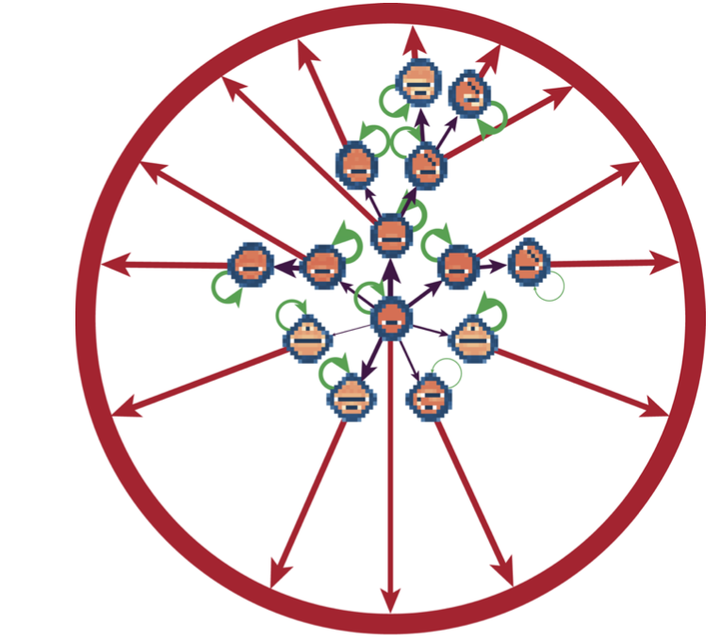Autopoiesis
 A network of possible ontogenies.
A network of possible ontogenies.
Autopoiesis is a proposed formal organizational property of living systems, defined as “a network of processes of production (synthesis and destruction) of components, such that these components: 1) continuously regenerate and realize the network of processes that produces them, and 2) constitute the system as a distinguishable unity in the domain in which they exist”.
In order to characterize the viability of autopoietic systems, we propose quantitative definitions for several of the core concepts in autopoiesis. Viability is defined as expected life span of an organization given an initial configuration. Robustness is the tendency for a system to retain its configuration despite internal or external perturbations. Plasticity refers to a systemʼs malleability in response to perturbation. Adaptivity is associated with increases in an individualʼs viability resulting from interactions with its environment.
We introduce a spatial model of concentration dynamics that supports the emergence of spatiotemporal inhomogeneities that engage in metabolism–boundary co-construction: the hallmark of Autopoietic organizations. A network of possible ontogenies is uncovered by subjecting a model protocell to sequential perturbations and mapping the resulting structural configurations. The combination of this model and analytical techniques provides a foundation for studying the emergence of viability, ontogeny, and adaptivity in more biologically realistic systems.